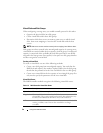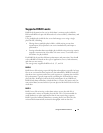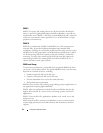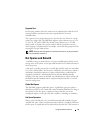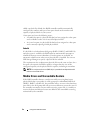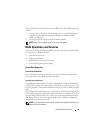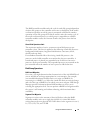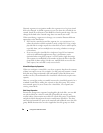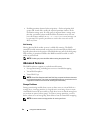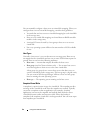
38 Using Your RAID Enclosure
Dynamic segment size migration enables the segment size of a given virtual
disk to be changed. A default segment size was set when the virtual disk was
created, based on such factors as the RAID level and expected usage. You can
change the default value if actual usage does not match your needs.
When considering a segment-size change, two scenarios illustrate different
approaches to the limitations:
• If I/O activity stretches beyond the segment size, you can increase it to
reduce the number of disks required to satisfy a single I/O. Using a single
physical disk for a single request frees other disks to service other requests,
especially when you have multiple users accessing a database or storage
environment.
• If you are using the virtual disk in a single-user, large I/O environment
(such as for multimedia application storage), performance can be
optimized when a single I/O request is serviced with a single data stripe
(the segment size multiplied by the number of physical disks in the disk
group used for data storage). In this case, multiple disks are used for the
same request, but each disk is only accessed once.
Virtual Disk Capacity Expansion
When you configure a virtual disk, you select a capacity based on the amount
of data you expect to store. For example, if a disk group will contain a virtual
disk that stores larger multimedia files and another virtual disk that stores
smaller text files, the multimedia file virtual disk will obviously require more
capacity.
However, you might need to eventually increase the virtual disk capacity for a
standard virtual disk by adding free capacity to the disk group. This creates
more unused space for you to create new virtual disks, or to expand your
existing virtual disks.
Disk Group Expansion
Because the storage array supports hot pluggable physical disks, you can add
two physical disks at a time for each disk group while the storage array
remains online. Data remains accessible on virtual disk groups, virtual disks,
and physical disks throughout the entire modification operation. The data
and increased unused free space are dynamically redistributed across the disk
group. RAID characteristics are also reapplied to the disk group as a whole.



